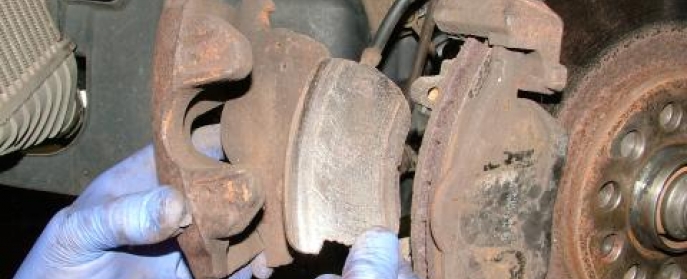Dealing with a seized brake caliper can be a frustrating and potentially dangerous issue. When a caliper seizes, it can cause uneven brake wear, pulling to one side when braking, or even a burning smell from the affected wheel.
However, by following some simple steps, you can resolve this problem and ensure your vehicle’s braking system is functioning properly.
In the following guide, we will provide a clear and concise explanation of how to fix a seized brake caliper, allowing you to tackle this issue with confidence and keep your vehicle safe on the road.
Troubleshooting A Seized Brake Caliper
Recognizing signs of a seized brake caliper is crucial in maintaining vehicle safety. Understanding brake drag and identifying uneven brake pad wear are key indicators.
Addressing a seized brake caliper requires specific tools and materials, including a C-clamp and brake fluid.
Steps to free a seized brake caliper involve loosening the brake bleeder, resetting the caliper piston, and inspecting and lubricating the caliper slides.
Replacing seized brake caliper components and implementing proper maintenance practices are essential.
This includes choosing the right brake fluid and scheduling regular brake inspections to prevent future caliper seizures.
How to Fix a Seized Brake Caliper
Fixing a seized brake caliper involves a few steps. Keep in mind that if you’re not comfortable or experienced with automotive repairs, it’s advisable to seek professional help.
Here’s a general guide on how to address a seized brake caliper:
Materials/Tools Needed:
- Jack and jack stands
- Lug wrench
- Brake fluid
- Brake cleaner
- Brake lubricant or high-temperature grease
- C-clamp or brake caliper tool
- Wrenches and/or sockets
- Wire brush
Procedure:
-
Safety First:
- Park your vehicle on a flat surface and engage the parking brake.
- Wear appropriate safety gear, such as gloves and eye protection.
-
Lift the Vehicle:
- Use a jack to lift the vehicle off the ground and secure it with jack stands.
-
Remove the Wheel:
- Use a lug wrench to remove the wheel covering the affected brake caliper.
-
Inspect the Brake Caliper:
- Check for visible signs of damage, corrosion, or brake fluid leaks.
-
Release Pressure from Brake Line:
- Use a brake bleeder tool or a wrench to slightly open the bleeder valve on the caliper. This releases pressure and makes it easier to compress the caliper piston.
-
Attempt to Compress the Caliper Piston:
- Using a C-clamp or a brake caliper tool, try to compress the caliper piston back into the caliper bore. This may help break free any corrosion causing the seizing.
-
Inspect and Clean:
- Examine the caliper sliding pins and ensure they move freely. If they are stuck, remove them, clean, and lubricate them with high-temperature grease.
-
Clean the Caliper and Rotor:
- Use a wire brush and brake cleaner to remove rust and debris from the caliper, rotor, and surrounding components.
-
Check Brake Fluid Level:
- Ensure the brake fluid reservoir is at the correct level. Top up if necessary.
-
Reassemble:
- Reinstall the caliper sliding pins and the caliper itself. Tighten all bolts to the manufacturer’s specifications.
-
Bleed the Brake System:
- Bleed the brake system to remove any air that may have entered the brake lines during the process.
-
Test Drive:
- Carefully test your brakes in a safe, open area to ensure they are functioning correctly.
If, after following these steps, the caliper is still seized or if you’re uncertain about any part of the process, it’s crucial to consult with a professional mechanic for further inspection and repair. Brake issues are critical for your safety, so it’s essential to address them properly.

Credit: haynes.com
Conclusion
Fixing a seized brake caliper is crucial for ensuring vehicle safety and performance. By following the steps outlined in this guide, you can effectively address this issue and prevent further damage.
Regular maintenance and prompt action can help avoid costly repairs and potential accidents.
Prioritizing brake caliper maintenance is essential for a smooth and safe driving experience.
